Last week, we examined a medieval stumpwork chasuble cross from the Domschatzmuseum Chur in Switzerland. This week, I have a very special stumpwork chasuble for you, which is also on display at the Domschatzmuseum Chur. So far, scholars have mainly been interested in the pseudo-Arabic silk fabric of the chasuble. So much so, that the bishop could sell the front part of the chasuble (but luckily not the embroidery!) in the 1940s to raise money to repair Chur Cathedral. The part of the chasuble that was sold is now kept at the MET. Let’s have a closer look at the extraordinary design of the medieval stumpwork embroidery.
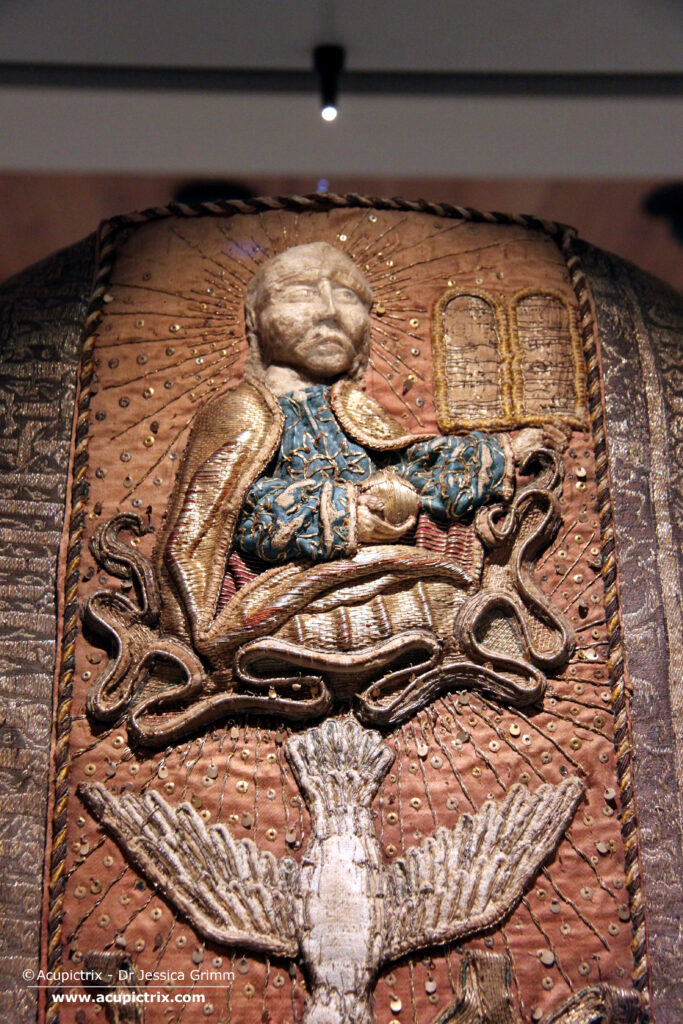
For some reason, I forgot to take an overview shot. However, you can see a lovely short documentary on the Domschatzmuseum Chur and the medieval stumpwork chasuble here (it is partly in Rhaeto-Romance (sounds very cool!) with German subtitles throughout).
The chasuble begins with a beautiful depiction of God the Father on a cloud, holding an orb and the Ten Commandments. Followed by the Holy Spirit in the form of a dove, descending from the sky. Please note: as the embroidery is heavily damaged in some areas, it has been covered with conservation gauze (e.g., the head of God).
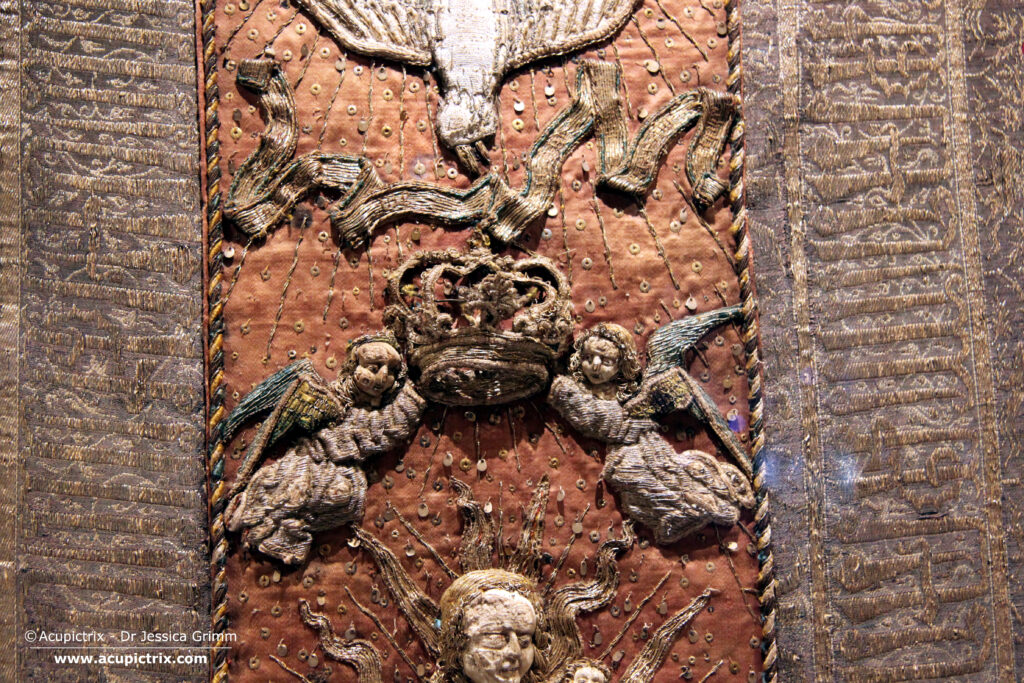
The dove (aka the Holy Spirit) drops a ribbon from its beak. It has some very damaged writing on it. The writing likely refers to the two angels holding the crown that hovers above Mary’s head. The crown is a lovely piece of medieval stumpwork.
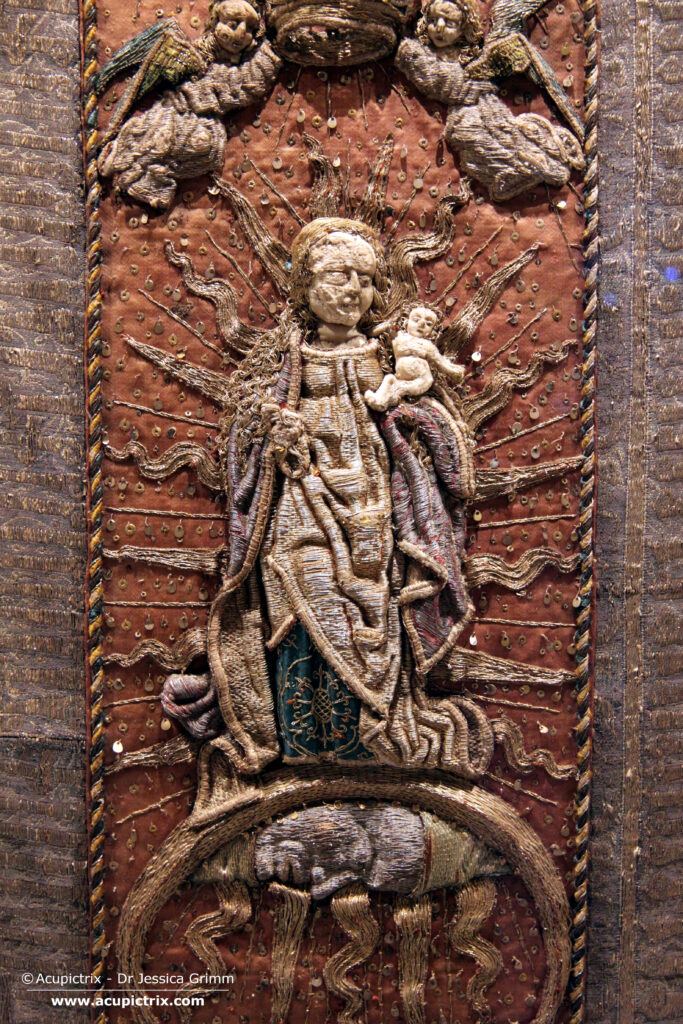
Next up on the medieval stumpwork chasuble is Mary holding baby Jesus. And the embroiderers went all out. There’s so much meaning in this one image of Mary that it is almost dizzying. Firstly, Mary is being crowned as Queen of Heaven by the two angels with the crown. At the same time, she is depicted as the mother of God. And then there are the rays of light behind her and the crescent moon (with a lovely face!) that she stands on. This refers to Mary as the Woman of the Apocalypse.
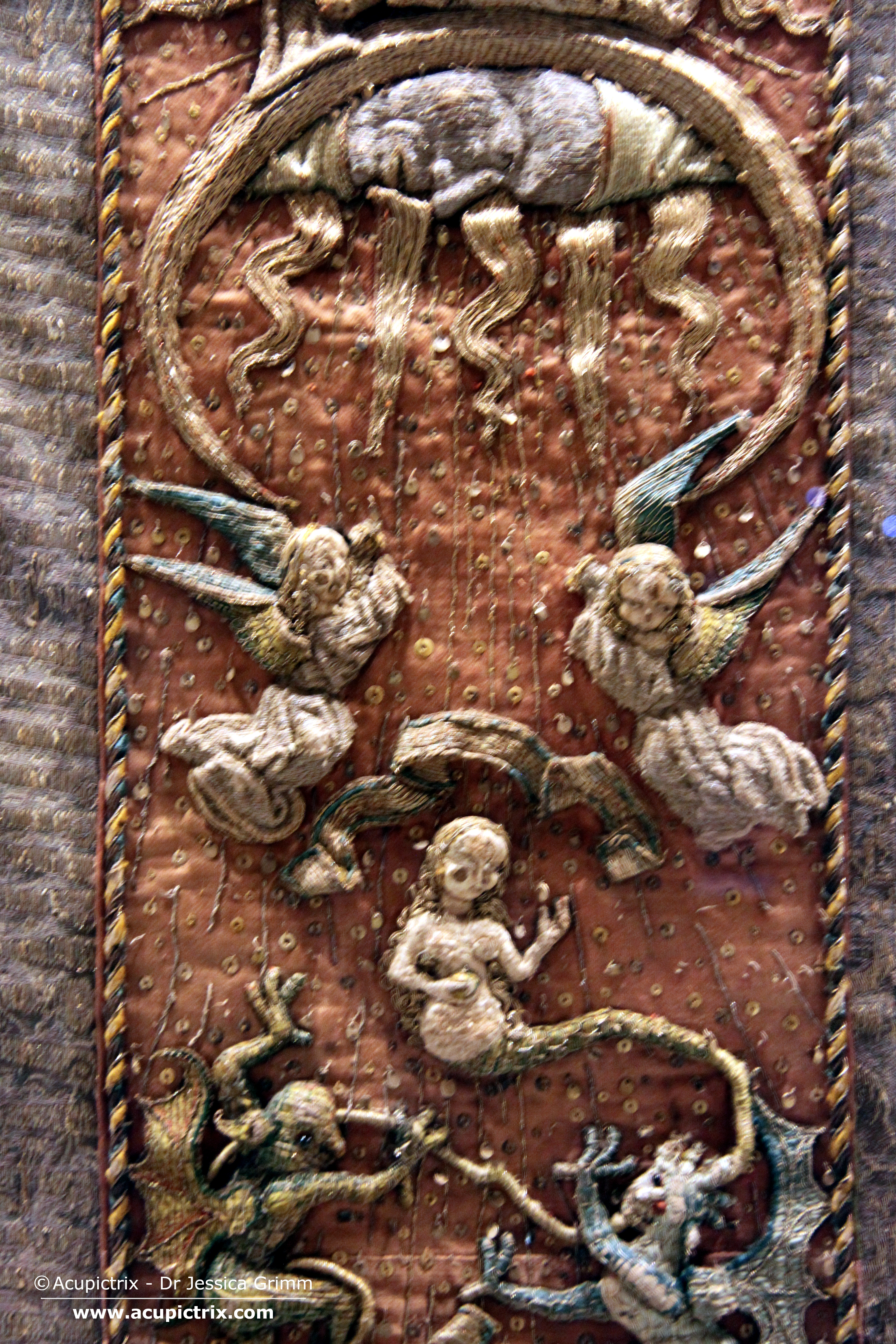
Below, the lovely medieval stumpwork moon are two angels with another ribbon, likely once with writing on it. Below them is what appears to be a mermaid. However, when you look closely, the naked lady holds something round in her hand, and her ‘tail’ is connected to the two scary-looking creatures. This means that the mermaid is, in fact, Eve with her apple.
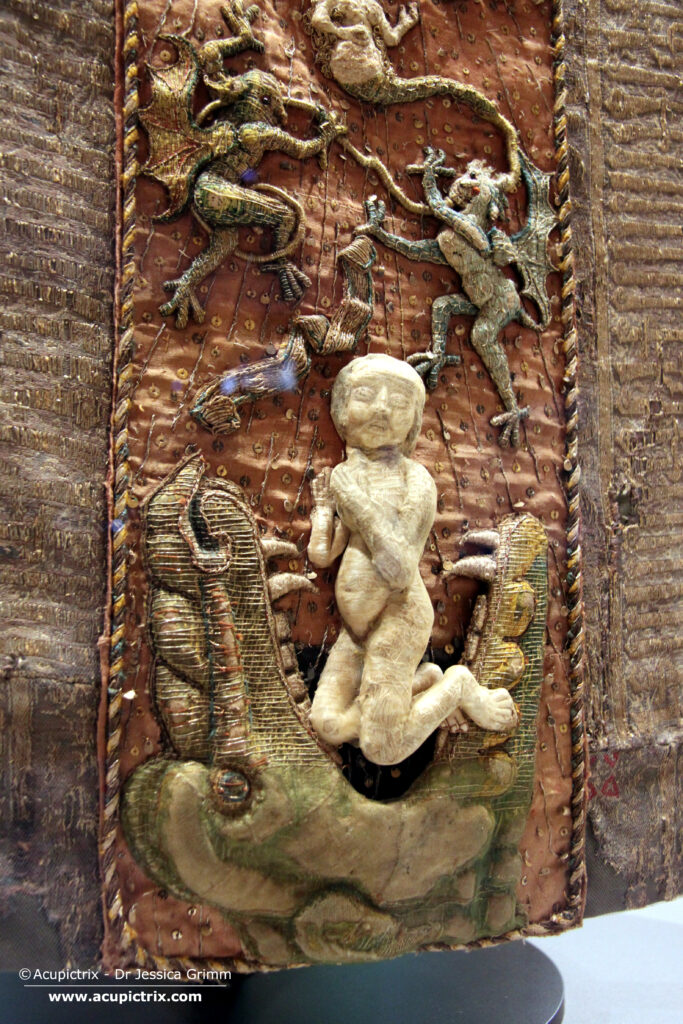
Below the two scary creatures is another ribbon, followed by a naked figure kneeling in the mouth of a huge green monster with very big teeth—a typical medieval depiction of a soul in hell. As an onlooker in around AD 1500, when this chasuble was being made and worn, you would have understood all these messages. Firstly, live by the Ten Commandments, or you will end up in hell. Secondly, Eve brought sin into the world by disobedience and was punished. And thirdly, pray to Mary, who obeyed God, and she will intercede for you before God and Jesus so you avoid hell. This lovely medieval stumpwork embroidery thus basically tells you to be good or else …
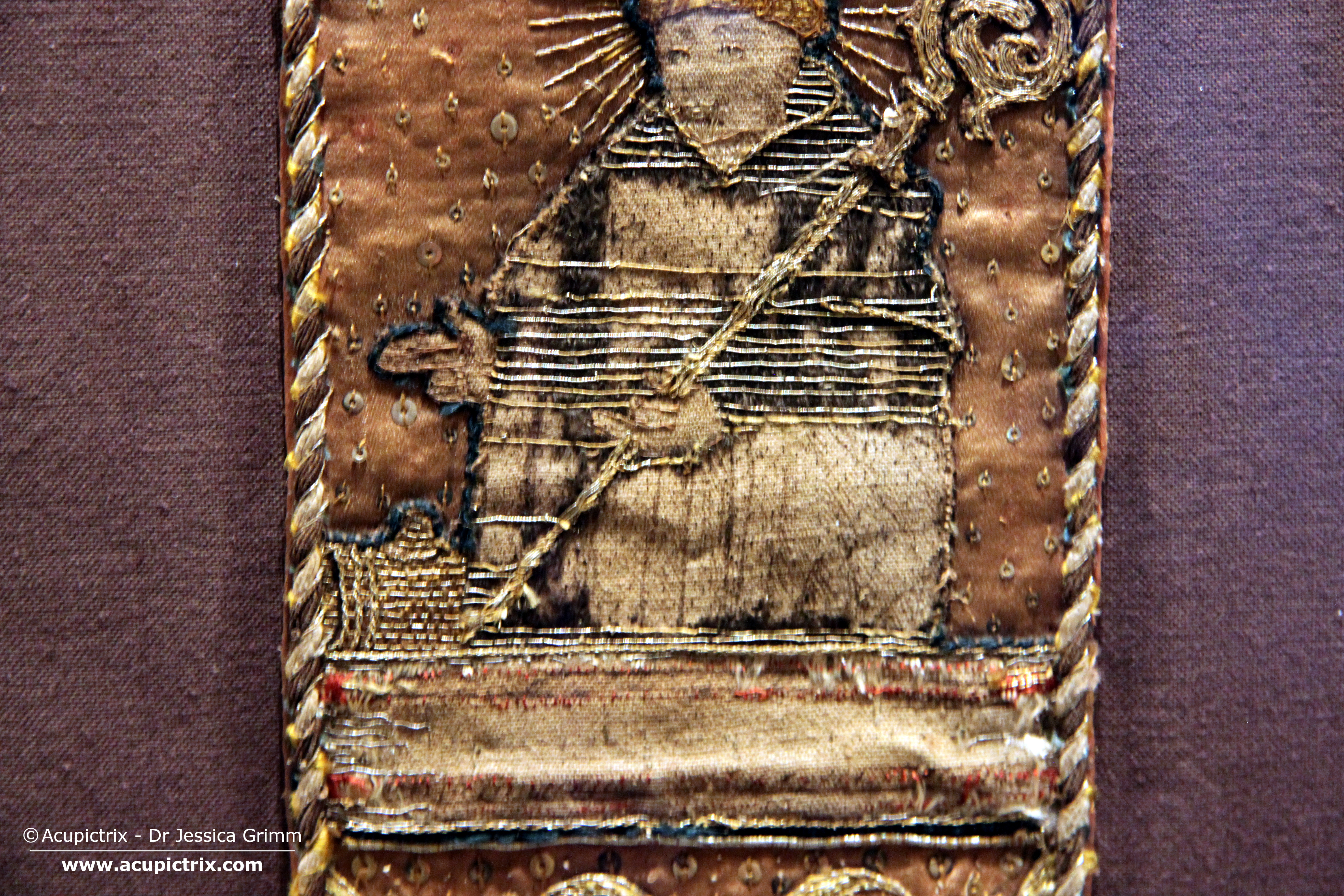
Although the column on the front of the chasuble does not show medieval stumpwork embroidery, it was made by the same embroidery workshop. It uses the same embroidery fabric powdered with spangles. It also shows this typical spacing out of the metal thread over the embroidered surface of the figures (see the green monster). And the frame around the orphreys is the same on the front and the back.
It is really unfortunate that the embroidery has not gotten much attention in the (recent) literature. However, by now, you will have recognised that the sharp-featured faces were likely formed in a mould. Thanks to the damage, we can see how the thick padding of the figures has been built up. There are scraps and bundles of coarse fibres tied together to form the different anatomical parts. The padding is then covered with silk (naked skin) or embroidery (clothing).
This is an extraordinary piece of medieval stumpwork embroidery. Totally fit for the Cathedral of Chur – both in skill and the use of luxurious materials. So far, I have not encountered a piece of medieval stumpwork embroidery that displays the same iconography. I particularly like the two scary creatures. And the fact that heaven must have had a fabric sale, as God and Mary wear clothing made from the same blue and golden fabric.
Literature
Haesen, S., 2023. Die Kasel von Chur: Materialität und historische Betrachtung. Bündner Monatsblatt 3, p. 224–247.

Thank you for finding and publishing pictures of such a magnificent work.
You are very welcome Pat!
Thank you so much for sharing these images. They are wonderful
Thank you Gina!
Jessica, what an AMAZING piece! Thanks for the wonderful photos – there’s so much to study and sample.